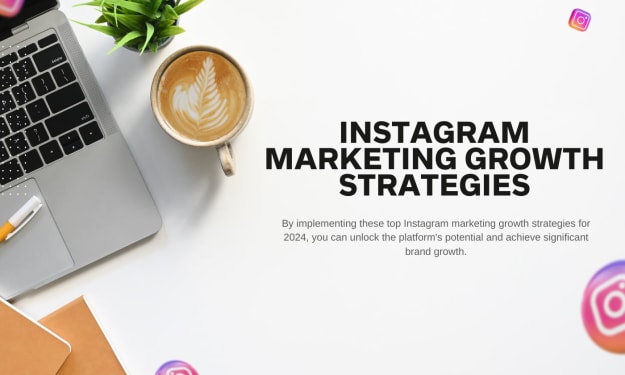Clothing Industry Management: A Guide to Apparel ERP Software
Apparel ERP Software

In today's rapidly evolving clothing industry, effective management is crucial for success. One of the key aspects of managing a clothing business is efficient resource planning and streamlined operations. This is where Apparel ERP (Enterprise Resource Planning) software plays a vital role. In this comprehensive guide, we will explore the significance of apparel ERP software and how it can optimize various processes within the clothing industry.
Understanding Apparel ERP Software
What is ERP Software?
ERP software is a centralized system that integrates multiple functions and processes within an organization. It enables businesses to manage various aspects such as inventory, production, sales, finance, and human resources, all in one comprehensive platform. With the ability to automate routine tasks and provide real-time data, ERP software streamlines operations and enhances overall efficiency.
The Importance of ERP in the Clothing Industry
In the highly competitive clothing industry, efficient management is essential for staying ahead of the curve. Apparel ERP software offers numerous benefits that can help clothing businesses gain a competitive edge:
Inventory Management: Maintaining optimal inventory levels is crucial to meet customer demands while minimizing costs. Apparel ERP software provides accurate inventory tracking, ensuring that clothing businesses have the right products in stock when needed.
Supply Chain Optimization: The clothing industry relies heavily on a complex supply chain involving multiple stakeholders, from manufacturers to distributors. ERP software streamlines supply chain processes, improving coordination and reducing lead times.
Product Lifecycle Management: From design and production to distribution and customer service, apparel ERP software provides a holistic view of the product lifecycle. This allows businesses to track and manage each stage effectively, ensuring timely delivery and superior customer satisfaction.
Data-Driven Decision Making: With real-time data and comprehensive analytics, ERP software empowers clothing businesses to make informed decisions. By having access to accurate information on sales, inventory, and customer behavior, businesses can identify trends, forecast demand, and optimize their strategies accordingly.
Improved Collaboration: Apparel ERP software facilitates seamless communication and collaboration across departments. By breaking down information silos, employees can work together more effectively, resulting in improved productivity and overall performance.
ERP Dairy: Transforming the Dairy Industry with Software Solutions
Choosing the Right Apparel ERP Software
Key Considerations
When selecting an apparel ERP software solution, it's essential to consider the specific needs and requirements of your clothing business. Here are some key factors to keep in mind:
Scalability: Ensure that the ERP software can accommodate your business's growth and expansion plans. It should be capable of handling increased volumes of data and transactions without compromising performance.
Customizability: Look for software that can be tailored to your unique business processes and workflows. This allows for a more personalized experience and ensures that the ERP solution aligns with your specific requirements.
Integration Capabilities: Check if the ERP software can seamlessly integrate with other essential systems and applications used in the clothing industry, such as e-commerce platforms, POS (Point of Sale) systems, and CRM (Customer Relationship Management) software.
User-Friendly Interface: Opt for an ERP solution that is intuitive and easy to use. This reduces the learning curve for employees and ensures smooth adoption across the organization.
Vendor Reputation and Support: Research the vendor's reputation and track record in the clothing industry. It's crucial to choose a reliable vendor that offers ongoing support and assistance to maximize the benefits of the ERP software.
Implementing Apparel ERP Software Successfully
Best Practices
Implementing apparel ERP software requires careful planning and execution to ensure a successful transition. Here are some best practices to follow:
Thorough Needs Analysis: Conduct a detailed analysis of your clothing business processes and identify areas where ERP software can provide the most significant improvements. This will help you align the software's capabilities with your specific requirements.
User Training and Support: Provide comprehensive training to employees to familiarize them with the new ERP system. Offer ongoing support and resources to address any questions or concerns that may arise during the transition phase.
Data Migration and Testing: Ensure a smooth migration of data from existing systems to the ERP software. Thoroughly test the new system before going live to identify and resolve any potential issues or discrepancies.
Change Management: Implementing ERP software often involves significant changes in workflows and processes. Develop a change management plan to help employees adapt to the new system and address any resistance or challenges that may arise.
Continuous Evaluation and Improvement: Regularly assess the performance of the ERP software and its impact on your clothing business. Identify areas for improvement and work closely with the software vendor to implement necessary updates and enhancements.
Conclusion
Apparel ERP software is a game-changer for the clothing industry, offering unparalleled efficiency and streamlined operations. By leveraging the power of ERP, clothing businesses can optimize inventory management, enhance supply chain coordination, and make data-driven decisions.
When choosing an ERP solution, consider scalability, customizability, integration capabilities, user-friendliness, and vendor reputation. Successful implementation requires thorough planning, user training, and ongoing evaluation. Embrace the power of apparel ERP software to stay ahead in the competitive clothing industry.
Frequently Asked Questions (FAQ)
Q1: What is apparel ERP software?
A1: Apparel ERP software, also known as Enterprise Resource Planning software, is a comprehensive system that integrates various functions and processes within a clothing business. It allows for efficient management of inventory, production, sales, finance, and human resources, among other aspects, in a centralized platform.
Q2: Why is apparel ERP software important for the clothing industry?
A2: Apparel ERP software is vital for the clothing industry due to its ability to optimize and streamline operations. It helps businesses manage inventory effectively, optimize the supply chain, track the product lifecycle, make data-driven decisions, and improve collaboration among departments. These benefits contribute to enhanced efficiency, reduced costs, and better customer satisfaction.
Q3: How does apparel ERP software benefit inventory management?
A3: Apparel ERP software facilitates accurate and real-time inventory management. It provides businesses with visibility into their inventory levels, enabling them to track stock, manage reorder points, and ensure the availability of the right products at the right time. This eliminates inventory shortages, reduces excess stock, and improves overall inventory control.
Q4: Can apparel ERP software optimize the supply chain in the clothing industry?
A4: Yes, apparel ERP software plays a significant role in optimizing the supply chain for clothing businesses. It streamlines processes such as procurement, production planning, order fulfillment, and logistics. By improving coordination among stakeholders and automating supply chain tasks, ERP software reduces lead times, minimizes bottlenecks, and enhances overall supply chain efficiency.
Q5: How does apparel ERP software help in managing the product lifecycle?
A5: Apparel ERP software offers a holistic view of the product lifecycle, starting from design and production to distribution and customer service. It allows businesses to track and manage each stage effectively, ensuring timely delivery and superior customer satisfaction. The software provides insights into product performance, demand trends, and customer feedback, facilitating informed decision-making throughout the product lifecycle.
Q6: How can apparel ERP software facilitate data-driven decision making?
A6: Apparel ERP software collects and analyzes real-time data from various departments and processes within a clothing business. By offering comprehensive analytics and reporting functionalities, it empowers businesses to make informed decisions based on accurate information. This includes analyzing sales trends, forecasting demand, identifying market opportunities, and optimizing pricing strategies.
Q7: What should businesses consider when choosing apparel ERP software?
A7: When selecting apparel ERP software, businesses should consider factors such as scalability, customizability, integration capabilities, user-friendliness, and the reputation of the vendor. It is important to choose software that aligns with the specific needs and workflows of the clothing business and can seamlessly integrate with other essential systems used in the industry.
Q8: How can businesses ensure successful implementation of apparel ERP software?
A8: Successful implementation of apparel ERP software requires careful planning and execution. Businesses should conduct a thorough needs analysis, provide comprehensive user training and support, ensure smooth data migration and testing, manage change effectively, and continuously evaluate and improve the system in collaboration with the software vendor. It is also crucial to involve key stakeholders and establish clear communication channels throughout the implementation process.
About the Creator
Bhaskar Sharma
Letest Information About Digital Marketing, Website Designing, and App or Software Development.






Comments
There are no comments for this story
Be the first to respond and start the conversation.